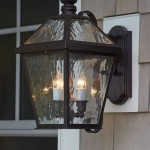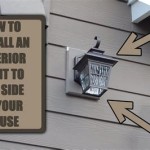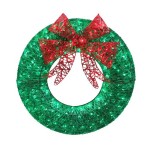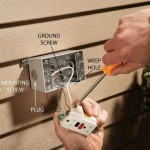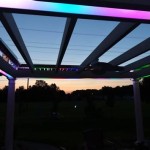How to Remove Green Algae from Outdoor Cushions
Outdoor cushions enhance the comfort and aesthetic appeal of patios, decks, and other outdoor spaces. However, exposure to the elements makes them susceptible to algae growth, particularly in humid climates. Green algae stains not only detract from the cushions' appearance but can also create a slippery surface. Effective removal requires specific cleaning methods to preserve the cushion fabric while eliminating the algae.
Essential Cleaning Supplies
Gathering the necessary supplies beforehand streamlines the cleaning process. The following items are typically required:
- Bucket
- Garden hose with spray nozzle
- Stiff-bristled brush (non-metallic)
- Mild dish soap or specialized outdoor fabric cleaner
- Bleach (optional, for stubborn stains)
- White vinegar
- Protective gloves
- Safety goggles (optional, for bleach use)
- Drop cloths or old towels
Preparing the Cushions for Cleaning
Proper preparation ensures effective algae removal and minimizes potential damage to the cushions. Consider these steps:
- Remove loose debris: Brush away any leaves, dirt, or other debris clinging to the cushions.
- Choose a suitable cleaning area: Select a well-ventilated area, preferably outdoors, to prevent the buildup of cleaning fumes. Protect the surrounding area with drop cloths or old towels.
- Test cleaning solutions: Before applying any cleaning solution to the entire cushion, test it on an inconspicuous area to ensure it doesn't damage or discolor the fabric.
Cleaning Methods for Algae Removal
Various cleaning methods effectively remove algae from outdoor cushions. The chosen method may depend on the severity of the algae growth and the cushion fabric.
Method 1: Soap and Water Solution
This method is often effective for light to moderate algae growth.
- Mix a solution of mild dish soap and warm water in a bucket.
- Apply the solution to the affected areas of the cushions using a sponge or brush.
- Scrub the cushions gently with a stiff-bristled brush, working in the direction of the fabric weave.
- Rinse thoroughly with a garden hose, ensuring all soap residue is removed.
Method 2: Vinegar Solution
Vinegar offers a natural cleaning solution for algae removal.
- Mix equal parts white vinegar and water in a spray bottle.
- Spray the solution liberally onto the algae-affected areas.
- Allow the solution to sit for 15-20 minutes.
- Scrub the cushions with a stiff-bristled brush.
- Rinse thoroughly with a garden hose.
Method 3: Bleach Solution (For Stubborn Stains)
Bleach is a powerful cleaning agent for stubborn algae stains, but should be used with caution, especially on colored fabrics.
- Dilute bleach in water according to the manufacturer’s instructions, typically a ratio of 1 part bleach to 10 parts water.
- Apply the diluted bleach solution to the affected areas using a sponge or spray bottle, wearing protective gloves and goggles.
- Allow the solution to sit for no more than 10 minutes to avoid fabric damage.
- Scrub gently with a brush.
- Rinse thoroughly with a garden hose, ensuring all bleach residue is removed.
Drying the Cushions
Properly drying the cushions prevents mildew growth and maintains their shape.
- Stand the cushions on their edge to allow for air circulation and faster drying.
- Place the cushions in direct sunlight, if possible, to accelerate drying and naturally disinfect the fabric.
- Ensure the cushions are completely dry before storing or using them.
Preventing Future Algae Growth
Taking preventative measures can minimize future algae growth on outdoor cushions.
- Regular cleaning: Periodically cleaning the cushions prevents algae buildup.
- Proper storage: Store cushions in a dry, covered area when not in use.
- Improve air circulation: Ensure adequate air circulation around the cushions to reduce moisture buildup.
- Use protective covers: Utilizing waterproof cushion covers can shield the cushions from rain and humidity, preventing algae growth.
Specialized Outdoor Fabric Cleaners
Consider utilizing specialized outdoor fabric cleaners designed to remove mildew and algae. Always follow the manufacturer's instructions for application and dilution.
Maintaining Cushion Longevity
Proper care and cleaning contribute significantly to the longevity of outdoor cushions. Regularly inspecting and addressing algae growth promptly prevents the stains from becoming deeply embedded and extends the life of the cushions.

How To Remove Mildew Stains From Outdoor Cushions

How To Remove Mildew Stains From Outdoor Cushions

How To Remove Mildew Stains From Outdoor Cushions

How To Remove Mildew Stains From Outdoor Cushions

How To Clean Outdoor Cushions And Scentsible

Clean Outdoor Cushions Save Top Tips

Clean Outdoor Cushions Save Top Tips

Cleaning Mrs Hinch Fans Share How To Remove Mould From Outdoor Cushion Covers Express Co

Wet Forget Outdoor Mildew Remover For Patio Furniture Life S Dirty Clean Easy

Inspiration How To Clean Mold And Mildew From Sunbrella Fabrics
Related Posts
